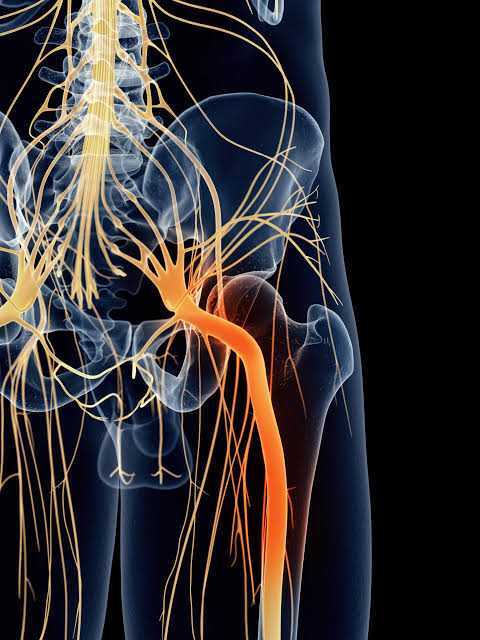Understanding the influence of diagnostic imaging and diagnostic labels: an insight to shoulder pain
If you have experienced shoulder pain and present to a GP, (or other health professional) you may often be referred off for an MRI. Unfortunately MRI’s are over utilised for non-traumatic shoulder pain. This can lead to increased levels of feeling fearful, uncertain or helpless because of the way the imaging results were conveyed to you, or because of what you perceive the results mean. The critical and important step that is often overlooked is the step where the health professional takes the time to go through the report and educate you on what it means using normalising / unthreatening terminology. There is often terminology like ‘partial thickness tear’ ‘full thickness tear’, ‘bone spurring’, ‘osteoarthritis’ ‘degeneration’ etc. This nocebic language and terminology immediately sends alarm bells ringing and you, the patient fears the worst “It’s only going to get worse” “Now I feel like it’s just hanging on by a thread”, “I’m going to need surgery”, “I need to stop using my shoulder”, which can lead to catastrophisation and hypervigilance.
What was once an uncomfortable shoulder pain, now has greater psychological impact that can influence a patient’s thoughts, beliefs, behaviour, and emotions.
Without appropriate education from ‘US’ the clinicians, it can lead the patient down a long path of mismanagement and chronic pain
In non-traumatic shoulder pain, many pathological imaging findings are completely normal age-related changes. These changes are highly prevalent in adults aged 40 years and older. Minagawa et al. (2013) found that the prevalence of a rotator cuff tear in the general population was 22.1%, which increased with age, furthermore asymptomatic tears were twice as common as symptomatic tears.
Asymptomatic full thickness rotator cuff tears are common and are present in approximately 50% of patients over the age of 65 with a contralateral symptomatic full thickness tear (Yamaguchi et al. 2001).
Cooper et al. (2022) found in Elite level asymptomatic rock climbers with a mean age of 34.1 years, undergoing bi lateral MRI, the overall prevalence of rotator cuff pathology was 80%. This should further challenge beliefs that tissue damage is directly associated with pain.
Imaging for non-traumatic shoulder pain often detects incidental pathological findings that can impair patient outcomes, by providing diagnostic labels that can serve as a barrier to recovery.
In non-traumatic shoulder pain, careful consideration should be taken before advising the patient to seek opinion from an Orthopaedic Surgeon or a Sports Physician for a corticosteroid injection or surgical opinion without first undergoing conservative management and progressive exercise intervention. Many pathological findings are normal age-related changes.
The language and medical terminology that we use on a day-to-day basis in clinical practice is often misinterpreted by a patient leading to catastrophisation, unhelpful beliefs, low expectation of recovery and avoidance behaviours.
A study by Castro et al. (2007) found that the misinterpretation of medical terminology was extremely common. Results showed that 81% of encounters contained at least 1 jargon term with an average of 4 per visit. The use of medical jargon, terminology and diagnostic labels can lead low comprehension rates and negative outcomes.
Many commonly used labels such as sub acromial impingement syndrome may be unhelpful and promote fear avoidance due to a biomechanical interpretation as the cause of the pain (Cuff & Littlewood. 2018)
The use of a biomedical model with shoulder pain can lead to low expectations of recovery. Dunn et al. (2013) found that patients who held poor expectation about the role of rehabilitation were the strongest predictor of surgery and that patients who have low expectation regarding the effectiveness of physical therapy are more likely to fail non-operative management.
Understanding our patient’s beliefs about their diagnosis and what it means to them is a key piece of information for the successful management of their shoulder pain. Patients who hold strong biomedical beliefs about their pain are less likely to benefit from conservative management and perceive that they will require a more serious intervention to be effective (Cuff & Littlewood. 2018).
There is extensive evidence demonstrating that conservative management is as good as, if not better than Corticosteroid injection (CSI) and surgical intervention at long term follow up (Haahr et al., 2005; Ketola et al., 2013; Rhon et al., 2014), AND conservative management is far more cost effective.
Explaining to our patients why you are not concerned about age related changes on imaging is key.
· “Great news, there is no signs of any serious pathology, In-fact this looks pretty good for someone of your age / level of exercise history / occupation etc”
· “These changes are normal age-related changes, just like getting wrinkles”
· “Your shoulder is sensitised, but the good news is, these changes respond really well to movement and exercise, Let’s get you more comfortable with movement”.
Simple reassurance, positive language and motivation can de-threaten their pain and give you a huge boost towards recovery. But like any chronic pain presentation, the management of rotator cuff related shoulder pain takes time, progression, and perseverance. There will be good days and bad days. Shoulder pain is multifactorial, and it is important to move away from a biomedical explanation and promote reassurance, confidence with movement and positive language.
The language and terminology that we use in clinical practice can have a powerful impact on a your pain experience. Health care practitioners can have the strongest influence on patient beliefs and expectation (Darlow, 2013) and therefore we must be aware of how our language, advice and terminology can influence outcomes just as much, if not more than the intervention we prescribe.
Bodine Ledden




















